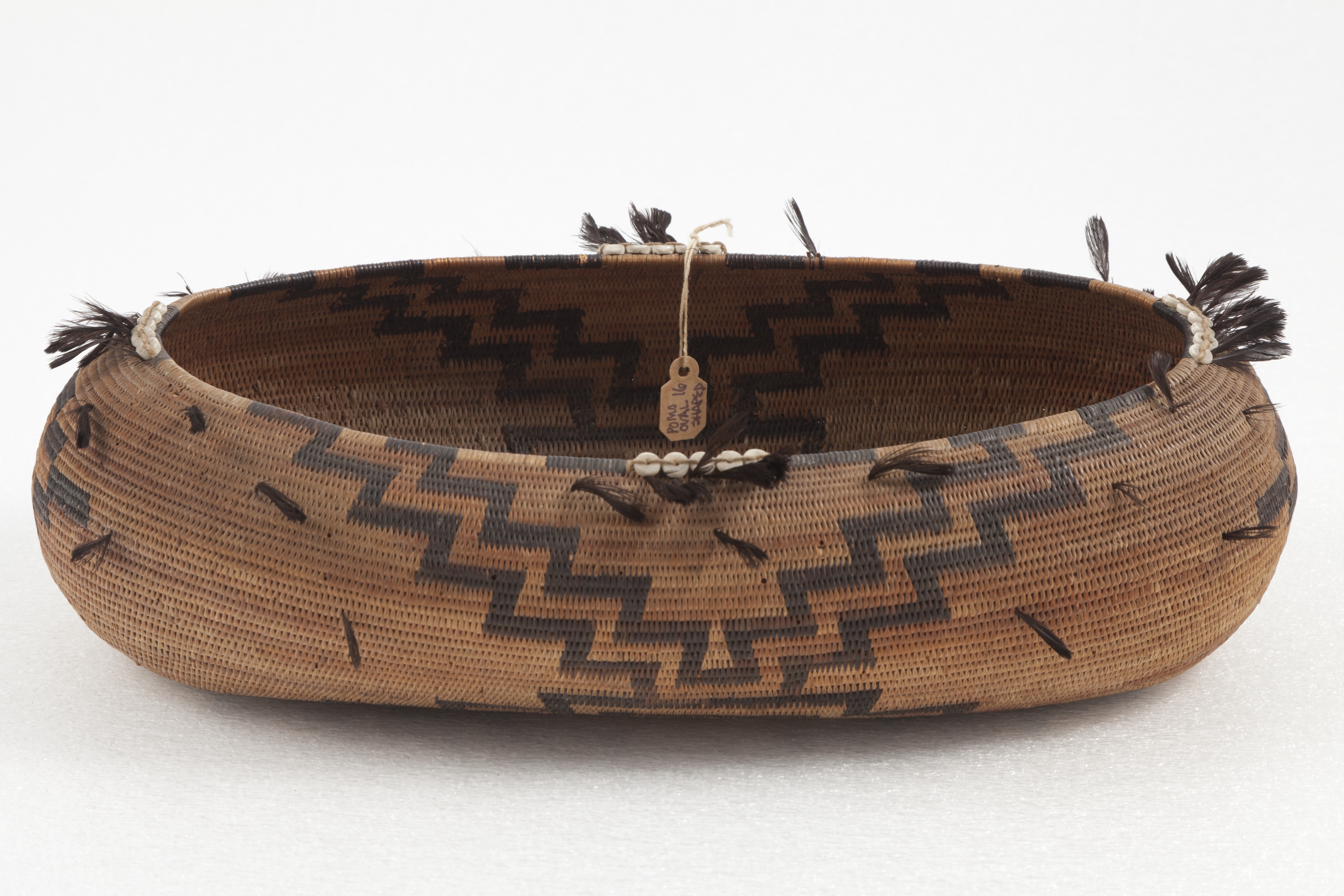
POMO TRIBE, NATIVE AMERICAN
California Pomo woven basket with shell beads and traces of feathers, ca. 19th Century
Plant fiber, shell, feathers
Collection Mills College Art Museum, Gift of an Anonymous Donor, 1945.143
These baskets were made sometime before the 20th century by Pomo Native Americans. Pomo is a blanket term for 72 separate tribes in North Eastern California (present day Sonoma, Mendocino, and Lake counties). Pomo people made these baskets working directly with the ecologies of where they lived. Historically, the Pomo stewarded the environment they harvested from and many of the plants and animals they used are now endangered species (species with an * are endangered). They worked with tule, juniper, bulrush, digger pine, saguaro cactus, rye grass, black ash, willow, sedge, grape, bracken, and redbud. Feathers and shells are also woven into the baskets. Some baskets feature feathers from yellow meadowlark, green duck, quail, lark, oriole, bluebird, California jay, red-winged blackbird, robin, red woodpecker*, magnesite, and abalone. The colors, symbols, and patterns all held specific meanings. The intricate baskets could take months or years to weave.
The origins of these baskets are unclear. They were given to the museum as gifts by an anonymous donor. Mills has about 200 Native American baskets, all without clear origins. In the 1860s when anthropologists began to realize that much of Native American culture was threatened after settlers had massacred, enslaved, and attempted to assimilate the indigenous peoples of California, they began to collect their baskets. Furthermore, baskets became popular collector’s items and were trendy commodities in the late 19th and early 20th centuries. Baskets that were once only used by Native Americans for practical and ceremonial purposes were then sold to settlers. Today many Pomo baskets are in fine art and anthropology museums. Groups like the California Indian Basketweavers Association work to preserve basketry and keep this artform alive in the California Native American community.
Fiona Ordway Mosser